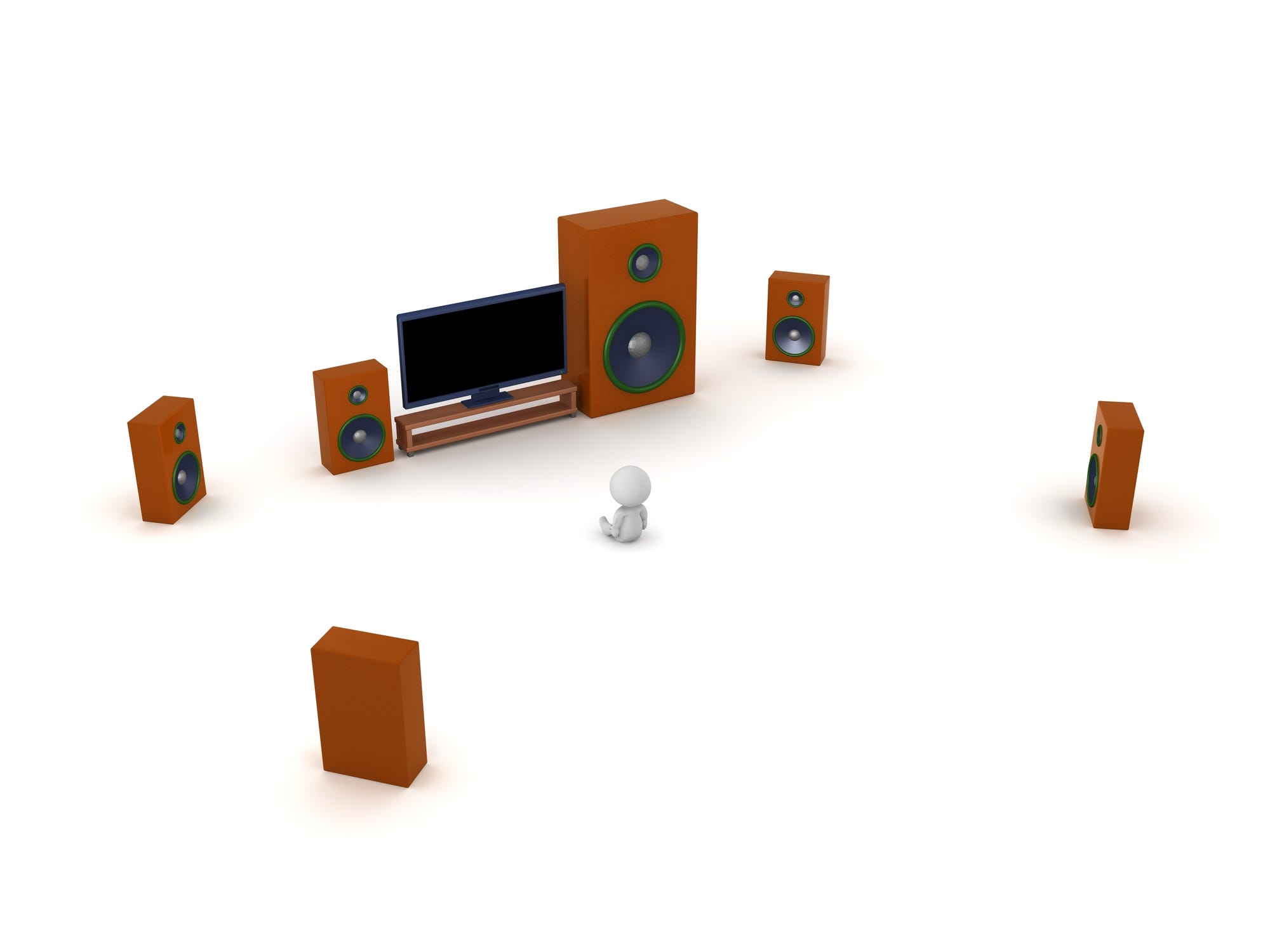
The world of hi-fi audio and surround sound can be a complex one, with many myths and misconceptions surrounding speaker systems. You've probably heard or seen contradicting statements about gear like speakers, amplifiers, or receivers -- specially when it comes to advertisers sharing information about their products. Let's take a look at some of these myths and reveal the truth.
1. You Don't Need A Subwoofer
While subwoofers are often viewed as an optional component of a speaker system, this is not the case when it comes to achieving real high fidelity surround sound. Specifically designed to handle low bass frequencies that cannot be reproduced by satellite speakers, subwoofers are indispensable for producing a proper bass sound. Even large floorstanding speakers are not able to produce low frequencies as effectively as a subwoofer. In fact, a typical AV receiver features bass management circuitry that directs all low end frequencies to the subwoofer, thereby lightening the load on the satellite speakers and keeping the overall sound clean and well-rounded.
Beyond that, subwoofers play a vital role in surround sound mixes by receiving the Low Frequency Effects channel. This means that they are not only responsible for producing low frequencies but also equipped to handle effects and nuances that cannot be properly reproduced by other speakers. Hence, it is not only essential to have a subwoofer, but having multiple subwoofers can further enhance the sound quality, depending on the size of the system and the room.
2. Stereo Always Sounds Worse Than Surround Sound
While surround sound systems inherently have the ability to create a more immersive sound than a stereo system, it is important to note that they do not necessarily make everything sound better. The quality of the surround mix has the most significant impact on the playback of audio, as a bad mix will result in poor sound quality. Many factors contribute to the quality of a surround mix, and the skill of the audio engineer is a crucial component.
The setup of the audio engineer and the calibration of the room and speakers are also important factors that can affect the quality of the mix. Poor speaker placement can have a significant impact on the sound of your surround system, just as it can in a professional setting.
Note that not all surround mixes are created by audio engineers, as some are generated using software through a process known as "upmixing." This involves using audio signal processors and other software to convert a stereo mix into a multichannel mix using phase manipulations and digital algorithms. Although this is sometimes the only option if the original surround mix files are not available, upmixes typically do not sound as good as professionally engineered multichannel mixes.
3. Speaker Positioning Isn't Super Important With Surround Sound
Contrary to what people may say, speaker positioning in surround sound systems is crucial. As the sweet spot becomes smaller, it becomes even more important to position the speakers in a location where the audio is perfectly calibrated.
Common positioning mistakes in home surround sound systems include placing the left, right, and center speakers in a straight line instead of angling them, positioning rear speakers on the sides of the listening position instead of behind, mounting rear speakers too high, or placing them behind furniture. These positioning errors can lead to muffled or improperly distributed audio throughout the room.
While most casual listeners may not require perfect speaker placement to achieve a satisfying sound, many strive to get as close as possible. Speaker positioning is an exact science, and you can learn more about it here.
4. The "Sweet Spot" is Bigger in Surround Sound Systems Compared to Stereo
Although you may think that the ideal listening position is larger when there are more speakers involved, the opposite is actually true. The sweet spot in surround sound systems is smaller than that in stereo systems. In a stereo system, accurate audio playback can be experienced from multiple positions, even during audio engineering and mixing in a studio. However, as more speakers are added to a system, it becomes increasingly challenging to align the speaker positioning properly.
In a professional mix room, the space is acoustically treated, and the speakers are precisely calibrated within the room to a fixed location in front of the console. The dimensions of the room also play a critical role in determining the ideal speaker positioning.
Unfortunately, most home theaters are not set up in such optimal conditions, as they are typically located in living rooms or spaces that are not specifically designed for high-fidelity listening. Given the numerous variables that can impact the actual sweet spot in a home theater, utilizing calibration technology such as the Yamaha Parametric room Acoustic Optimizer can be highly beneficial.






